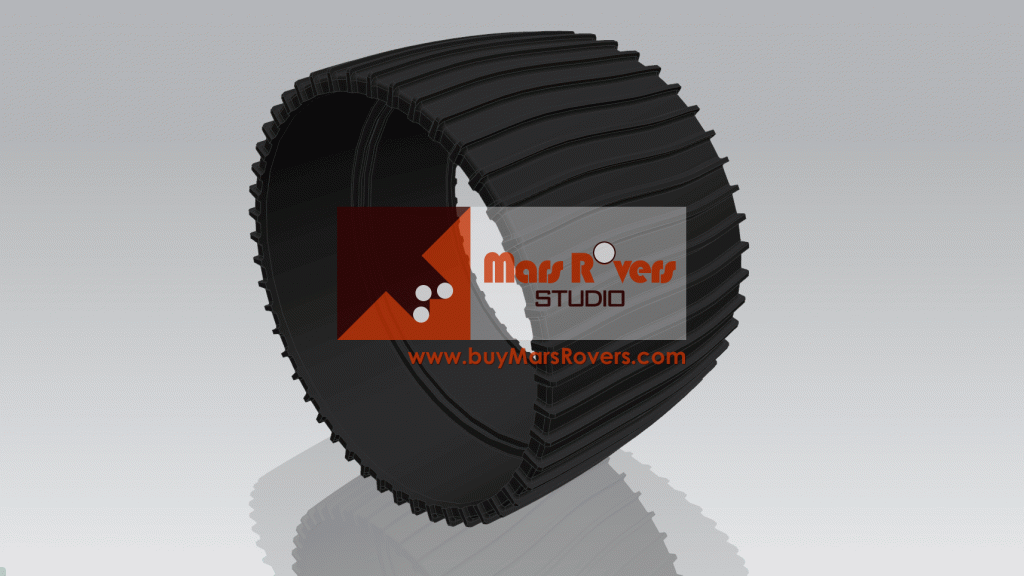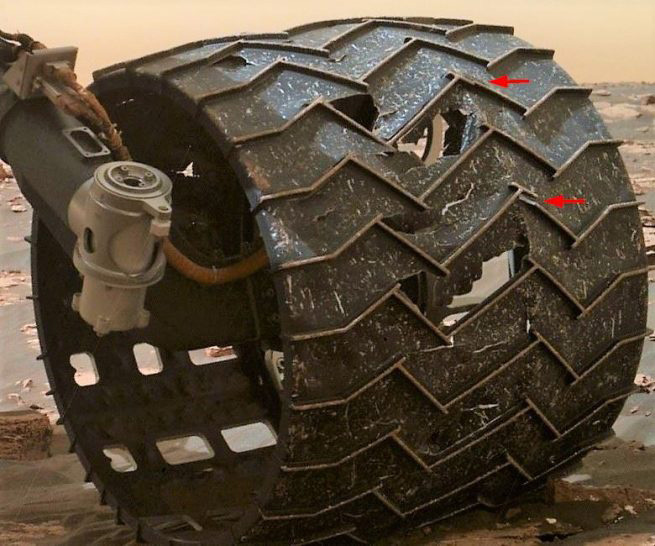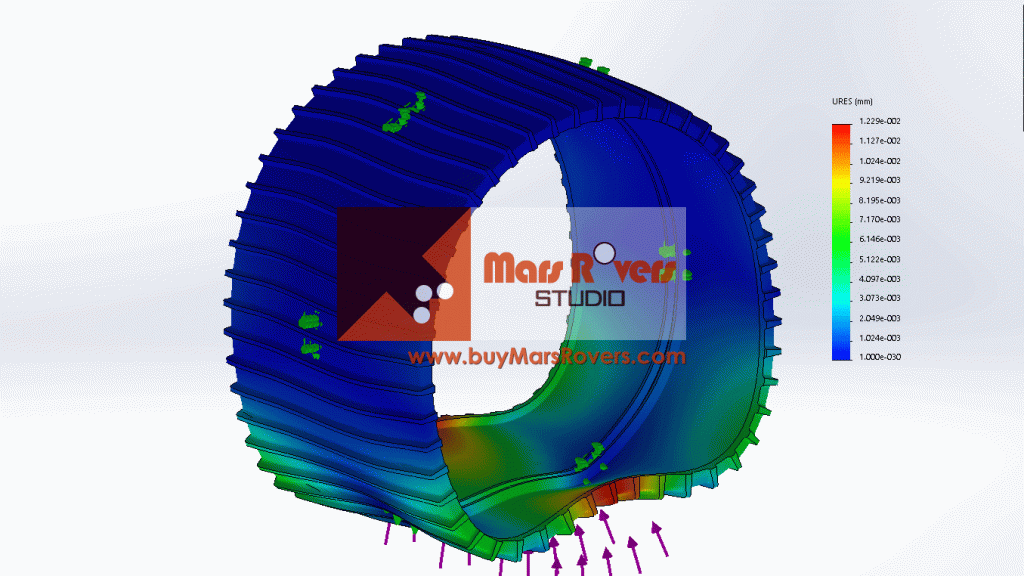There are 3 types of drill bits that the Mars 2020 Perseverance Rover‘s bit carousal carries. The first type is the coring bit, the second type is the regolith bit and the third type is the abrading drill bit – or the abrader. The three types of drill bits are interchangeable depending on what the target samples are or the purpose of the specific operation. There are 6 coring bits,1 regolith bit, and 2 abraders in the Mars 2020 Perseverance Rover‘s bit carousal. In addition, there is one more launch abrading bit which is located in the Corer on the end of the turret assembly.
The Mars 2020 Perseverance Rover‘s drills are designed to have a rotary percussive motion as an efficient way to extract scientifically selected rock and soil samples from the Martian surface. Our 1:2 Perseverance Mars Rover Replica‘s drills will simulate the rotary percussive motion, but the drills cannot actually drill and collect rock samples like the real Mars 2020 Perseverance Rover‘s drills.
The Mars 2020 Perseverance Rover‘s coring drill bit has a height of 228 mm or 8.98 inches, and the diameter of each of the Mars 2020 Perseverance Rover‘s drills is 1 inch or 27mm. The drill bit’s body material is custom 465 stainless steel coated with titanium nitride. The coring bits collect coring samples – cylindrical-shaped rock samples and will preserve the stratigraphy layers as they are so that in the future if the samples are returned to Earth, scientists can study the stratigraphy of the collected Martian rocks. For our Mars Rover Replica, the coring drill bits will have a height of 114mm, and a diameter of 0.5 inches. The material for our Mars Rover Replica‘s coring drill bit will also be stainless steel but we might not replicate the titanium nitride coating.
Each sample core the Mars 2020 Perseverance Rover collects has a length of 60mm or 2.4 inches, the sample core’s diameter is 0.5 inches or 13mm, and the Martian sample itself is around 10 to 15 grams every tube. For our 1:2 Perseverance Mars Rover Replica, the sample tubes will be empty, and you can put some rocks or sands in them for decoration.
Unlike the Mars 2020 Perseverance Rover‘s coring drill bits, the Mars 2020 Perseverance Rover‘s regolith drill bits, with a height of 185.2mm, or 7.29 inches, collect regolith, which means broken rock materials and dust, but the sealing, transferring, and storing processes are the same as the coring drill bits. For our Mars Rover Replica, the regolith drill bits will have a height of 92.6 mm or 3.645 inches.
Different from both the Mars 2020 Perseverance Rover‘s coring drill bits and regolith drill bits, the Mars 2020 Perseverance Rover‘s abrading drill bits don’t collect any samples. The abrader has a height of 130.7mm or 5.15 inches and its job is to abrade or scrape off the top layer of the rocks in order to expose the surface feature that is not exposed to weathering. Then the science instruments will study the exposed rocks and soils for scientific purposes. The two abraders are planned for 74 missions, and they have an optimized pattern design for the teeth so that when scaping the top layer off of the rocks, the exposed surface will be smooth, which is more convenient for the later analysis. Our Perseverance Mars Rover Replica‘s abrading drill bits will perfectly replicate the appearance structure of the Mars 2020 Perseverance Rover‘s abrading drill bits and our Perseverance Mars Rover Replica‘s abrading drill bits have a height of 65.35 mm, or 2.575 inches.
The Mars 2020 Perseverance Rover‘s launch abrading bit has a height of 108.1mm, or 4.26 inches. The launch abrading bit is pre-installed into the Corer chuck at the center of the end of the turret. It provides a sealing cover for the Corer chuck, and additional abrading power if needed. Our Perseverance Mars Rover Replica‘s launch abrading bit will perfectly replicate the appearance structure of the Mars 2020 Perseverance Rover‘s launch abrading bit and our Perseverance Mars Rover Replica‘s launch abrading bit will have a height of 54.05 mm, or 2.13 inches.
Structurally, the Mars 2020 Perseverance Rover‘s three types of bits have mostly the same features such as the percussion interface and bit sleeve. The coring bits and regolith bits will drill into the Martian surface and collect samples, so they have a sample tube interface for exchanging tubes. However, the Mars 2020 Perseverance Rover‘s abraders don’t have the sample tube interface since they don’t collect actual samples. For the same reason, the coring bit and regolith bit can house a sample tube inside but the abrading bits don’t have this feature. Our 1:2 Perseverance Mars Rover Replica will perfectly replicate the drill bits’ appearance structure but they won’t have the actual functions that the real Mars 2020 Perseverance Rover‘s drills do.




